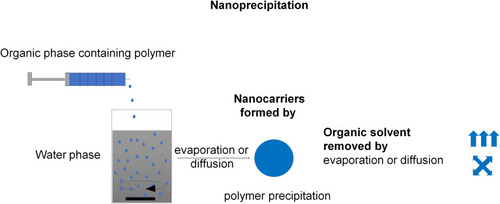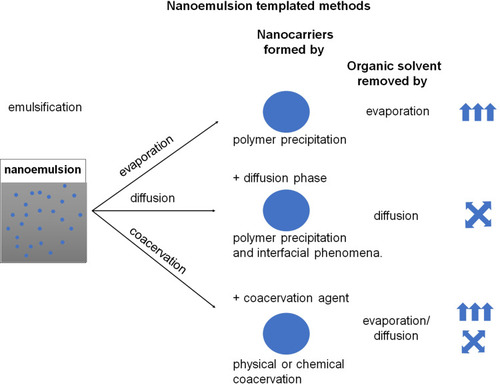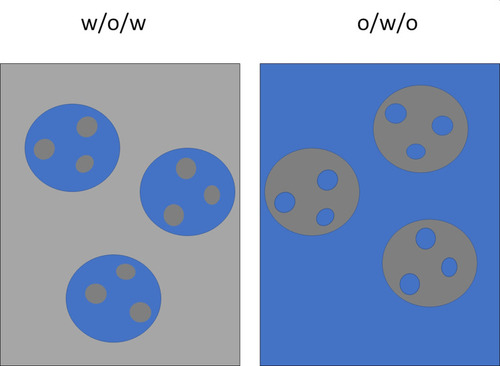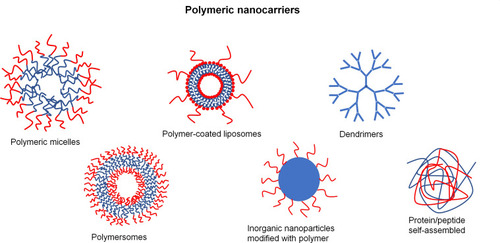Figures & data
Figure 1 The main biomedical application of polymeric nanocapsules/nanocarriers.

Figure 5 Schematic illustration of the nanoprecipitation method. Nanocarriers are formed by polymer precipitation caused by organic solvent removal by evaporation or diffusion. Data from Weiss et alCitation11 and Keech et alCitation13.

Figure 6 Schematic illustration of the nanoemulsion templated methods. Nanocarriers are formed by polymer precipitation, interfacial phenomena, or coacervation caused by organic solvent removal by evaporation or diffusion. Citation11 Citation13Data from Weiss et alCitation11 and Keech et alCitation13.

Figure 7 Schematic representation of water in oil in water (w/o/w) and oil in water in oil o/w/o emulsions.

Table 1 Polymeric Nanocapsules Obtained and Characterized in vivo for Delivery of Various Anticancer Compounds
Table 2 Polymeric Nanocarriers Obtained and Characterized in vivo for Delivery of More Than One Chemotherapeutic
Table 3 Polymeric Nanocarriers Obtained and Characterized in vivo for Delivery of Different Drugs for Lifestyle Disease
Table 4 Polymeric Nanocarriers Obtained and Characterized in vivo for Delivery of Anti-Inflammatory Drugs
Table 5 Polymeric Nanocarriers Obtained and Characterized in vivo for Delivery of Drugs for Neurological Disorders
Table 6 Polymeric Nanocarriers Obtained and Characterized in vivo for Delivery of Drugs Against Infectious Diseases



